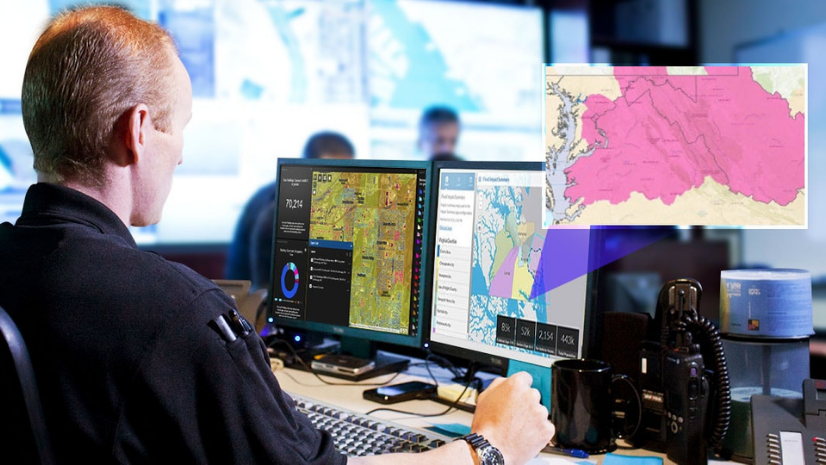The Department of Homeland Security (DHS), in coordination with the Federal Emergency Management Agency (FEMA) and the Cybersecurity and Infrastructure Security Agency (CISA), is transforming the way agencies address critical technology and communications needs during response to major incidents. These changes include the Information Technology Support Unit and the recently introduced position of Information and Communications Technology branch director within the National Incident Management System (NIMS).

Challenges with Technology Capabilities
For years, public safety agencies and incident management teams (IMTs) have used the process identified in NIMS to address command and control needs in the all-hazard environment. In many cases, agencies struggle with the deployment of information technology capabilities; digital communications; and the infrastructure required to keep responders connected, safe, and informed with incident intelligence via technologies such as geospatial information systems. These capabilities are now expected by our nation’s responders to complete their mission. Often, command personnel and IMTs were elevating certain staff’s responsibilities informally to address the needs of a given incident. One example experienced by the Central Virginia All Hazard Incident Management Team resulted in the creation of an information technology section chief position during a Type I special event. While this action may not be for the incident command system (ICS) purist, this command structure allowed for the IT position to be involved in the management process as part of the command staff. The elevation of this position increased the input of IT professionals in the development of the incident action plan (IAP), participation in command staff functions, and immediate feedback on capabilities to unified command.
DHS and CISA recognize the need for an elevation of information technology and communications personnel in the ICS structure. As technologic capabilities evolve to include location tracking of responders in the field, field data collection, and streaming video capabilities, so too does the complexity of information systems. These complicated systems must be managed by highly trained and credentialed personnel.
National Incident Management System (NIMS): ICT Functional Guidance
To ensure information systems are being appropriately managed, there is the FEMA document National Incident Management System: Information and Communications Technology Functional Guidance, which—as stated in the document—”provides a framework to incorporate Information and Communications Technology (ICT) services within ICS to meet the increasing demands and expectations for ICT capabilities.”
The document states that it “establishes how the ICT function manages the infrastructure and systems that support and enable communications, information management processes and applications required by an incident management’s organizational structure. Additionally, [the document] describes how the ICT function safeguards incident operations from cybersecurity threats and explains how to manage the interrelationship of communications and IT infrastructure.”
Role of the ICT Branch Director in Incident Management
The ICT branch director is responsible for overseeing the development and implementation of communication and information management policies and procedures for emergency responders. This includes developing and maintaining communication plans, providing technical support for communication systems, and ensuring that communication equipment is available and functioning properly. The ICT branch director works closely with other emergency response organizations, including federal, state, and local agencies, to ensure effective communication and information sharing during incidents.
Ensuring Effective Incident Management
Effective incident management is critical to the success of emergency response operations. The ICT branch director plays a key role in ensuring that emergency responders have the information they need to respond to incidents quickly and efficiently. This includes providing real-time information about an incident—such as its location, nature, and extent—as well as information about available resources and response capabilities. Effective communication and information management can help emergency responders make informed decisions and take appropriate actions to mitigate an incident’s impact.
The ICT branch director also plays a critical role in ensuring that emergency responders have the necessary resources to respond to incidents effectively. This includes ensuring that communication equipment is available and functioning properly and providing technical support for communication systems. The ICT branch director works closely with other sections within the command structure to coordinate the use of technology resources and ensure that emergency responders have access to the resources they need to respond to incidents.
In conclusion, the ICT branch director plays a critical role in ensuring effective incident management. By providing communication and information management support and coordinating the use of resources, the ICT branch director helps emergency responders respond to incidents quickly and efficiently. Effective incident management is critical to the safety and security of our communities, and the ICT branch director plays a key role in ensuring that emergency responders have the information and resources they need to respond to incidents effectively.
Should you or your agency need support deploying information technology—particularly geographic information system (GIS) technology, field mobile applications, or other critical capabilities that support the development and sharing of incident intelligence—please contact Esri public safety personnel.



